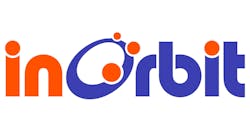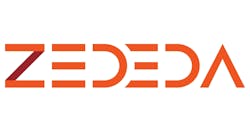New Technology Companies to Watch
In the world of automation, many technology providers are well-known names—at least to purchasers in the manufacturing and processing industries. But the rise of industrial digitalization has led to a large number of new companies entering the automation technology scene. These companies are targeting analytics and other software-related issues, developing new hardware devices, and increasingly combining hardware and software technologies to create smart devices.
As a follow-up to our last article exploring new technology start-ups to watch, we give you the lowdown on eight new start-up companies to keep your eye on.
ADISRA
ADISRA’s name is inspired by the six concepts of resilience outlined in Judith Rodin's book, "The Resilience Dividend": Aware, Diverse, Integrated, Self-Regulating, and Adaptive. ADISRA was started by serial entrepreneurs who wanted to address the void they saw in the market for cost-effective digital transformation technologies targeted at smaller companies. Ernest Roland is chairman and Marcia Gadbois is president and general manager. Roland has been involved in the founding of several successful start-ups, such as CRISP Factory Automation software based on the OpenVMS operating system and InduSoft HMI and SCADA for mobile and web devices. Gadbois was the president of InduSoft, which was acquired by Invensys in 2013 before Invensys was acquired by Aveva in 2014.
In addition to SmartView, ADISRA offers InsightView, a cloud-based OEE (overall equipment effectiveness) and analytics platform, which can be accessed via mobile, web, HMI, and desktop devices; and ADISRA KnowledgeView, a cloud-based proactive approach to quality and maintenance. Gadbois said KnowledgeView uses “advanced analytics and machine learning to localize potential equipment or quality malfunctions as early as possible to avoid the need for more reactive and complex maintenance or quality activities.”
ADISRA is a self-funded, privately held company. Gadbois said the company’s principal investors are the founders and its customers. The company focuses on small-to-mid-market discrete manufacturers with customers in industries ranging from automotive manufacturing to machinery OEMs to food and beverage and pharmaceutical manufacturers. Gadbois said ADISRA focuses on companies “looking for cost-effective solutions that are easy-to-deploy without the burden of an expansive IT support staff.
Fizyr
In 2016, Delft Robotics (founded by Professor Martijn Wisse in 2014 as a spin-off from the Netherlands’ Delft University of Technology) participated as a robotics integrator in the Amazon Picking challenge and won the competition—mainly due to its ability to apply deep learning. This led the company to pivot towards developing a deep-learning computer vision software product and re-branding as Fizyr in 2017.
Fizyr designs, builds, and installs the standardized computer vision software which is licensed to system integrators who build pick-and-place robotic cells to install in end user facilities. “Just as the camera and gripper are the eyes and arms of a robot, the vision software is the brain that analyzes the image and enables the robot to move accordingly,” said Fizyr CEO Herbert ten Have. “Fizyr’s cutting-edge software is a plug-and-play modular product providing picking-and-placing solutions in harsh logistics environments.”
Among other uses, this software can be targeted for e-commerce applications, in which the items to be picked can have great variation in terms of size, material, color, and placement—all of which are attributes for which traditional logistics systems often cannot account. That’s why the adoption of technologies such as artificial intelligence (AI) and deep learning have the potential to alleviate common picking difficulties. Fizyr’s neural network is trained to classify an item, strategize the pressure required to pick the object, and propose the best possible grasp poses to select the item.
This capability also helps solve another challenge faced by industry—the labor shortage and heavy reliance on human pickers to do repetitive tasks. Companies like Fizyr support human operators by taking on repetitive activities and letting the humans focus on value-adding tasks.
InOrbit
After learning that many companies manage their robots with various, cobbled-together technologies, Florian Pestoni, CEO, and Julian Cerruti, chief technology officer, founded InOrbit to address the common barriers to growth in robot operations.
Cerruti worked with robotics at Willow Garage, Savioke, and Clearpath, while Pestoni is a software engineer who transitioned to product responsibility at Microsoft and Facebook. Pestoni is also the organizer of the Robot Operations Working Group, a non-profit expert-driven community group dedicated to promoting effective robot operations.
The company’s latest funding round of $2.6 million was led by Animo Ventures, with participation by Yamaha Motor Ventures & Laboratory Silicon Valley, and Kärcher New Venture.
Pestoni said InOrbit has “numerous customers to date and serves a variety of industries in the emerging robotics space—ranging from supply chain and logistics to cleaning, retail, agriculture, and food services.
Senseering
Digitized industrial data is extremely valuable. The problem is, there’s too much data to collect and clean to quickly digitize it and enable its value-creating potential. Creating a business search engine for machine data to streamline this process is what senseering is doing. The idea for a data sharing platform took place in 2016 following the Ph.D. thesis of senseering founder Dr. Daniel Trauth, who explored the limits of an AI algorithm developed on a machine. In 2018, Trauth created senseering, a company dedicated to capture the missing machine data needed for effective data analyses.
Senseering's platform looks at IoT data like a search engine. It is designed to find and access the right IoT data at the right time. “Our IoT platform allows data to be found, shared, aggregated, and monetized across the globe so that every data scientist has access to the best data at any given time,” said Trauth.
According to Trauth, senseering's roots are in mid-sized B2B manufacturing companies. Recently, however, companies in the smart cities, smart building, supply chain, chemistry, and food sectors have also become interested in cross-silo data exchange and global collaboration on shared data. To that end, senseering has now processed more than 100 billion high-frequency datasets from more than 15 industrial clients.
In 2020, the German federal government's largest and first AI innovation competition awarded senseering with equity-free funding of more than $910,000.
Noodle.ai
Noodle.ai was launched with a vision of combining advanced artificial machine intelligence with the best of human intelligence to create a world without waste. About $2 trillion is lost every year in the supply chain and 94% of the world's waste comes from industry in the form of excess inventory, product defects, unplanned downtime, and unfilled orders. The company has spent five years of R&D and invested $110 million developing its portfolio of artificial intelligence software to enable supply chains and manufacturers to eliminate waste before it happens through the use of AI-powered predictions and recommendations.
FlowOps helps users see and understand the most perilous hidden patterns that can disrupt their operations. The software provides a view into near-term risks with the context to understand the impact to the business measured in dollars. The software predicts problems before they happen and provides recommended actions for how to correct and prevent the issue from recurring. It also explains each of the recommended actions and simulates scenarios to help decision-makers as it continually learns and improves with every decision made.
“This new category of software is a tango between machine and human intelligence—each doing what they do best,” said Stephen Pratt, Noodle.ai’s founder and CEO. “FlowOps applications synthesize data, identify patterns, and provide recommendations that augment the supply chain and the manufacturing professional’s ability to analyze the information and make the best data-informed decisions.”
Pratt founded Noodle.ai in 2016 after working at IBM as global leader for IBM Watson Services. The company has received funding from TPG Growth and Dell Technologies.
Noodle.ai has customers in the food and beverage, household goods, cosmetics, chemicals, steel, specialty metals, and automotive industries.
Turntide
Recognizing that electric motors are one of the most common and inefficient machines that consume the most electricity globally, Turntide’s goal is the modernization of the world’s electric motors to reduce our global carbon footprint and avoid the worst of climate change.
“Turntide’s Smart Motor System has a fundamentally different architecture,” said Johnson, “only using energy when needed. By incorporating patented control software, the motor optimizes efficiency at all speeds. And a cloud dashboard delivers real-time data on operating conditions and energy use to predict maintenance issues before they occur.”
Piyush Desai is Turntide’s current vice president of motor design, who came up with the idea of using a switch rotor positioned backwards to make it more power dense and efficient. Of course, this idea isn’t entirely new, as switched reluctance technology was developed in the 19th century. The problem is that switched reluctance motors (SRM) aren’t known for having much control precision.
Turntide’s development of HR-SRM (high rotor pole SRM), combined with control capabilities and software, led to the creation of what Turntide calls “the world’s most efficient and highly reliable smart motor.”
In 2021, Turntide announced $80 million in funding from Breakthrough Energy Ventures, Robert Downey Jr.’s Footprint Coalition Ventures, the Amazon Climate Pledge Fund, Keyframe Capital, Fifth Wall’s Climate Technology Fund, and Captain Planet LP. Also in 2021, the company received another $225 million in convertible note financing, with investments from Canada Pension Plan Investment Board (CPP Investments), Monashee Investment Management, JLL Spark, Breakthrough Energy Ventures, Captain Planet LP, and Suvretta Capital Management. This second investment in 2021 brought Turntide’s total funding to $400 million.
Turntide’s growing customer base includes more than 600 companies, including Amazon, which uses millions of motors in its distribution centers and corporate buildings, and BMW, which is piloting Turntide’s Smart Motor System at its plant in Spartanburg, S.C., to drive efficiency and significantly reduce the cost of electricity.
Ware
San Francisco-based Ware was formed to reduce the time-consuming manual labor associated with warehouse inventory management. The company was founded in 2019 by Ian Smith, CEO, and Joseph Moster, chief technology officer. The two have more than 20 years of combined experience in the use of drones in the enterprise and have assembled a team of logistics and technology professionals.
“We help them realize savings of $1 million or more per year by helping reduce losses and spoilage,” said Smith.
According to Smith and Moster, automating warehouse cycle counts with Ware is a 3-step process:
- Data capture: Self-flying, autonomous drones operate inside the warehouse, avoiding obstacles and capturing images of inventory.
- Data processing: Images are uploaded from the facility to Ware for analysis, barcodes are scanned, and inventory locations are identified.
- Report Delivery: Inventory reports are delivered in Ware Cloud. The software’s dashboard displays an artificial intelligence-assisted visual audit log of the warehouse’s inventory, prioritizing issues that require attention.
Ware’s most recent venture funding round was $2.5 million led by UP.Partners, including participation from Bloomberg Beta, 2048 Ventures, and Adam Bry, CEO of Skydio.
Zededa
Focusing on automation providers, machine builders, and industrial end users, Zededa offers what it calls a “simple and scalable cloud-based orchestration solution that delivers visibility, control, and security for distributed edge computing.” The company says this gives “customers the freedom to deploy and manage any app on any hardware at hyperscale while connecting to any cloud or on-premises systems.”
A key aspect of Zededa’s edge technology is its use of the zero-trust security model to segment layered OT (operations technology) control networks from IT systems with distributed firewall capabilities. The technology reportedly supports any edge hardware and application format, compared to others that typically only support Docker containers. The zero-trust security model features silicon-based root of trust, a crypto-based ID that eliminates local device login credentials, measured boot, remote attestation, and full disk encryption. This combination of capabilities is said to ensure device integrity, detect anomalies in the software stack, and govern data flow from edge to cloud with a policy-based distributed firewall. Compliance requirements are met via centralized management with role-based access control.
Zededa’s founders—Said Ouissal, Roman Shaposhnik, and Erik Nordmark—founded the company to help users deal with the unprecedented amount of data now generated at the edge of the network and via the internet. They determined that the only way companies could reasonably deal with all this data would be to move the analytics and inference to the edge where the data are generated, as it would be too expensive and time consuming to upload all of this data to the cloud and analyze it there.
To date, Zededa has raised $31.5 million from principal investors such as Lux Capital, Energize Ventures, Almaz Capital, Rockwell Automation, Juniper Networks, EDF North America Ventures, and HBAM. Zededa currently has more than 20 customers in the manufacturing, oil and gas, and energy industries.
About the Author
David Greenfield, editor in chief
Editor in Chief
Stephanie Neil
Editor-in-Chief, OEM Magazine

Leaders relevant to this article:








